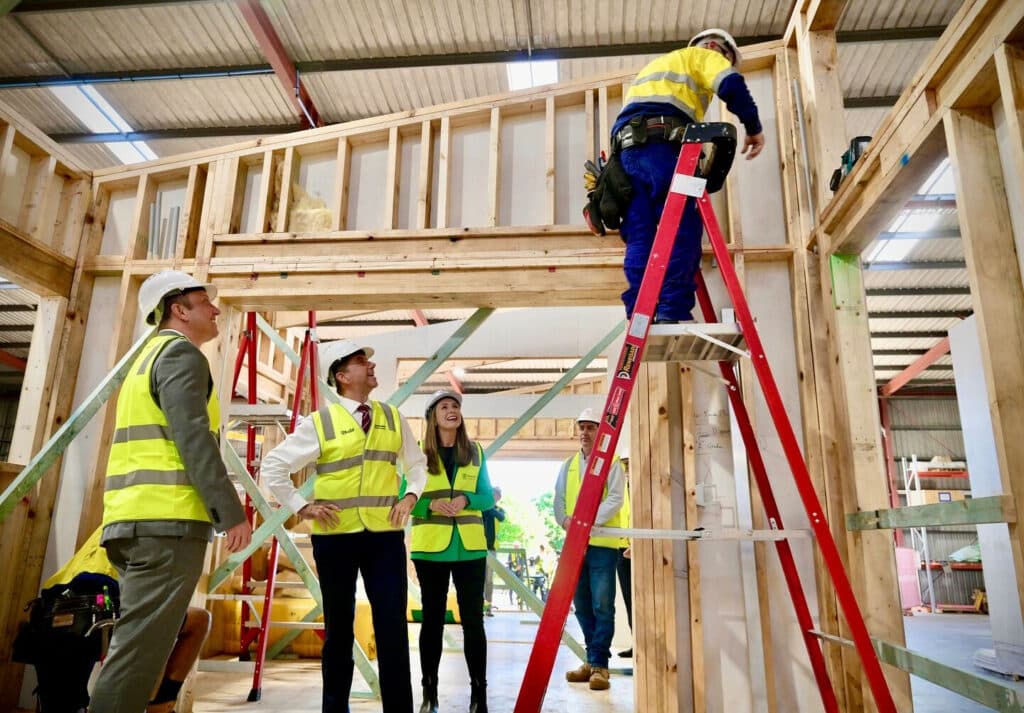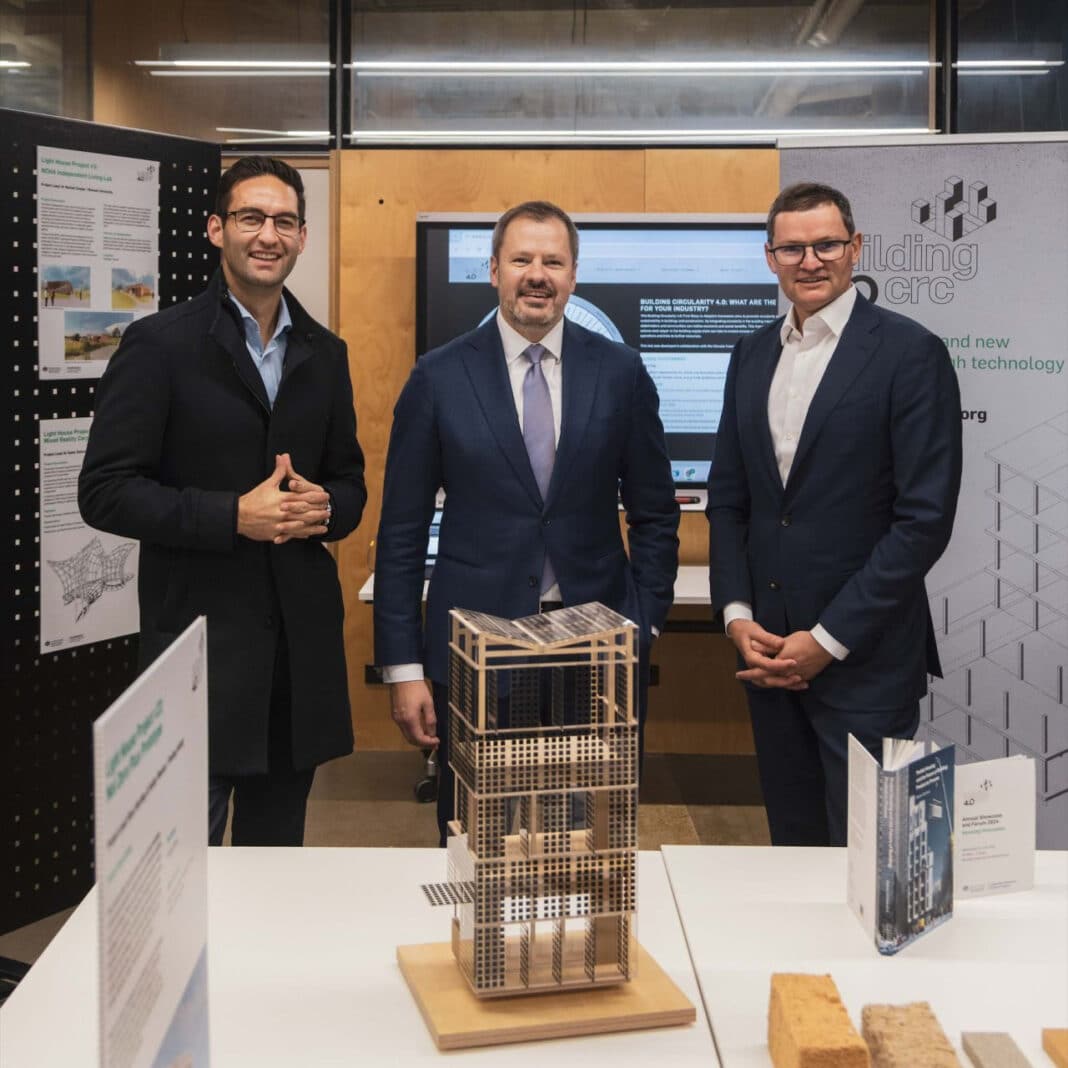Australia has “zero chance” of meeting its housing plans without significant investment in modular and prefabrication construction.
That was one of the key takeaways from a round panel discussion hosted by Ed Husic, Australia’s Minister for Industry and Science, which included representatives from master builders, the Housing Industry Association, and the Building 4.0 Cooperative Research Centre.
“We need to build more quality homes quickly,” Minister Husic told the roundtable, adding that automation, robotics, and precision design will significantly reduce construction time. “People are (now) staying in homes that they would have no idea are prefab and modular.”
Minister Husic said, “Prefabrication has evolved to deliver high-quality, low-cost, and often personalised homes, with the industry contributing to our goal of building 1.2 million homes by the end of the decade.”
Last year, Wood Central reported that global governments are turning to prefabrication, panalisation, 3D printing, and mass timber construction to address a housing crisis that risks spiralling out of control, leading PrefabAus, the peak body for modular building, published a roadmap pushing for prefabrication to “penetrate” 80% of all construction materials.
“The government’s focus is not only on speeding up the construction process but also on identifying and removing barriers that hinder the growth of the modular construction sector,” Minister Husic said, adding that “our modular and prefab sector is already building a lot of homes and creating a lot of jobs, but more can be done.”
According to Jocelyn Martin, HIA’s managing director, addressing red tape and preconceived perceptions about quality are barriers to adoption.
“Addressing gaps in the National Construction Code is critical, as is a clearer understanding of the chain of custody in the manufacturing and building process, financing and business models and insurance,” Ms Martin told the round table. Before adding that “a better understanding of terminology is needed…there are many options for construction from modular floor and wall panels through to fully completed homes.”
“Often people see prefab and modular as being an inferior housing option,” Ms Martin said, “but there is a range of builders doing some beautiful work, producing amazing homes.”
Australia is already “going modular” to address the housing crisis.
State governments, including Queensland and NSW, are already betting on prefabs to close housing gaps, especially in rural and regional areas.
“My first Budget as Premier of the state will help get more homes up off the ground, put more tradies on the tools, provide support for renters and our hardworking homelessness organisations,” Queensland Premier Steven Miles told reporters ahead of his first Budget as Premier.
“I know that to build the homes Queensland needs, we need to do things differently, which is why QBuild and businesses across the state will be enlisted to roll out more modular homes.”

Last year, NSW Minister for Planning and Public Spaces Paul Scully confirmed that the NSW government will look at “all options,” with prefab “an efficient constriction method,” which will “rapidly increase housing supply in a considerably faster timeframe than traditional construction.”
What needs to be done?
According to a report presented at the Offsite 2023 conference, prefabrication has the potential to penetrate more than 80% of all new building elements over the next decade. The report claims Australia “has the right conditions to increase uptake in all these areas.”
These include an unmet demand for construction, a limited supply of skilled labour, and a growing cohort of innovative businesses that supply quality solutions to the market.
However, “when it comes to production, manufacturing and assembly, Australia’s efforts are fragmented, lacking in scale and digital take-up.”
To capitalise on these opportunities, it calls for action on twelve recommendations, including:
- It recognises the importance of smart building in government industrial policies. This includes embedding smart building goals in initiatives such as the National Reconstruction Fund and National Housing Policy.
- Creating a portfolio of projects will enable the prefabrication and smart building industry to build scale and increase capacity. This should be done through advanced public procurement processes. These could include a presumption favouring prefab on selected projects or targets/mandates on designated projects.
- Intensive application of smart building on specific large-scale projects such as the National Housing Accord and the Brisbane Olympics.
- Embedding design for manufacturing and assembly (DfMA) into projects.
- Use of advanced public procurement to improve the flow of funds for prefabrication
- Building consistent nationwide standards and better regulation.
- Creation of a national program to accelerate the digital adoption of smart buildings to be delivered through a network of future factories that would form a national prefabrication hub.
- Promotion of business model innovation for the accelerated development of smart buildings.
- Working with unions, industry and training providers to build a future workforce to handle digital offsite factory production. This would involve a trade certificate for prefabrication that would include digital skills.
- Building an ecosystem including research hubs and smart building industry clusters.
- Create flagship projects along with baselines and benchmarks to demonstrate the benefits of smart buildings. Specifically, this would include designating ten smart building national flagship projects.
- Shifting perceptions and creating an image of better outcomes through prefabrication regarding performance, quality, safety and social and environmental effects.
To learn more about the roadmap, visit Wood Central’s special feature on PrefabAus’s roadmap.






